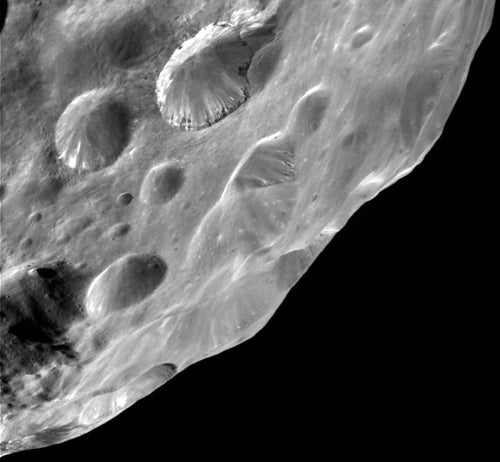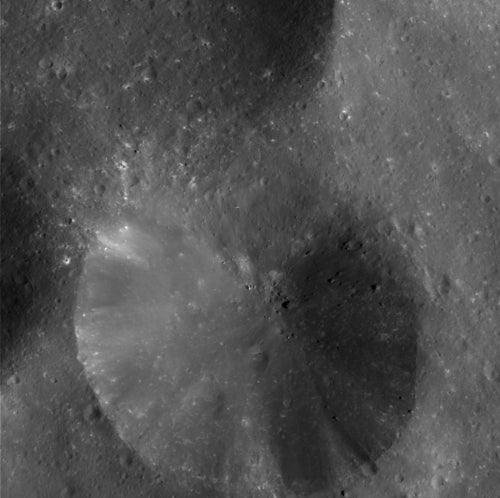Saturn’s outermost moon, Phoebe, remains a mystery. Its eccentric, tilted orbit, opposite Saturn’s spin, suggests it didn’t form alongside Saturn’s other satellites. Two new studies using the Cassini-Huygens probe have essentially confirmed this theory. The independent studies tag the Kuiper Belt, on the fringes of the solar system, as Phoebe’s likely birthplace, but the case is far from closed.
Torrence Johnson, at the Jet Propulsion Laboratory in Pasadena, California, and Jonathan Lunine, at the University of Arizona’s Lunar and Planetary Laboratory, used deviations in Cassini’s course caused by Phoebe’s gravitation to calculate Phoebe’s mass and density.
They found that the 140-mile (220 km) wide satellite weighs 1,630 kilograms per cubic meter. This clearly separates Phoebe from Saturn’s other moons, which have an average density of just 1,300 kg/m3. “It’s a pretty dense object, especially considering that it is likely to be somewhat porous,” Lunine told Astronomy.
Phoebe’s density closely matches that of two outer solar-system objects (after adjusting for the extent to which their greater mass compresses them) — Pluto, now firmly identified as a Kuiper Belt object (KBO), and Neptune’s moon Triton, which likely started life in the Kuiper Belt before being captured by Neptune. Johnson and Lunine conclude that Phoebe appears to have “a composition identical to that of the only Kuiper Belt objects for which we possess densities.”
Both studies appeared in the May 5 issue of Nature.
“Some Kuiper Belt objects were scattered in,” Lunine explains. “One such rock-ice body, Phoebe, happened to be captured by Saturn’s gravity.”
Lunine’s views gain support from a study of Phoebe’s surface led by Roger Clark of the U.S. Geological Survey in Denver, Colorado. Using Cassini’s Visible and Infrared Mapping Spectrometer, his team identified dozens of chemicals on Phoebe, including ice, carbon dioxide, iron- and carbon-based substances, and cyanide compounds. Phoebe’s cyanide signature has been detected on just two other solar-system objects, Comet Borrelly and the dark face of Iapetus, Saturn’s outermost large moon.
Brad Dalton of NASA’s Ames Research Center at Moffett Field, California, thinks the density and spectroscopic studies together make a strong case for Phoebe’s origin as a KBO. “While this is not incontrovertible proof … the independent findings of both groups give a very consistent picture,” he says. “While I think the Clark et al. compositional analysis is very strong, the two sets of analyses taken together is what is really convincing.”
“What is clear,” Dalton says, “is that Phoebe falls into a class of objects that now populates the outermost reaches of the solar system, including the Kuiper Belt.”
Clark remains cautious about Phoebe’s origins, but he has no doubts about the value of the new Cassini findings. “The detection of carbon dioxide and the cyanide compounds were very unexpected,” he says. “We didn’t think Phoebe would be this exciting.”











